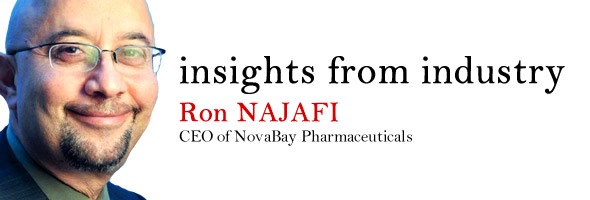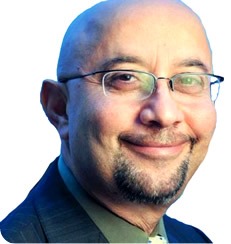
Why are antibiotics losing their power?
Approximately 80 years ago the first antibiotic was discovered by Sir Alexander Fleming, for which he was justifiably awarded the Nobel Prize in medicine.
Since that discovery, scientists have discovered another 150 antibiotics. Unfortunately, as I’ll explain later, all these antibiotics are a variation on the same theme discovered by Alexander Fleming.
It’s quite ironic that antibiotics are actually toxins produced by bacteria or molds as survival mechanisms for either offensive or defensive purposes.
A successful bacterium is one that can compete with other bacteria for food and resources and is able to multiply without inhibition from other species. Over the last 80 years science has been able to isolate many of these toxins for the benefit of mankind.
We have found a number of these toxins to be safe in humans but extremely deadly to other bacteria. So when our body is taken over by bacteria A, we use the toxin of bacteria B to eliminate the infection in our body without significant side effects to our body.
Over the years, by overuse and misuses of these toxins, we have unfortunately created an imbalance in the exquisite equilibrium that had been established over billion years and we are now seeing superbugs flourishing and sometimes taking over.
Let me explain how we are overusing and misusing these life saving antibiotics. Antibiotics are inappropriately prescribed by some physicians for the common cold, which is not a bacterial disease - it’s viral. Or the wrong antibiotic is prescribed.
Veterinary antibiotics are widely used in many countries around the world to treat disease and protect the health of animals. However they are also incorporated into animal feed to improve livestock growth rates and feed efficiency.
Since antibiotics are poorly adsorbed in the stomach of animals, most of the drug is excreted unchanged in faeces and urine. Given that many countries enhance soil fertilizer by mixing in animal waste, there is growing international concern about the potential impact of antibiotic residues on the environment.
Also, more often than not, old and expired antibiotics sitting in our medicine cabinets end up in our landfills, sewers and ultimately find their way into our waters and streams. Today much of our waterways, streams, rivers, and bays contain low levels of many antibiotics.
A simple Google search of “San Francisco Bay” and “Antibiotics” will indicate that the San Francisco bay mud and sediments contain over 40 different human or animal-used antibiotics. That’s where we believe the bulk of our antibiotic resistance is coming from.
How concerned should we be by the increasing resistance of bacteria to antibiotics?
Four million infections and approximately 180,000 deaths between the United States and Europe have been reported due to multidrug resistant bacteria.
The Chief Medical Officer of United Kingdom, Dame Sally Davies, sounded the alarm back in February of this year when she alerted Parliament that antibiotic-resistant diseases pose an “apocalyptic threat” and should be added to Britain’s national register of civil emergencies.
In the U.K. and around the world we are seeing infections that are untreatable with current antibiotics. That’s very concerning.
We must not allow nature to take us back to the pre-antibiotic era where the infection of a minor wound or pneumonia resulted in death.
The “at risk” populations will be the very young, the very old and those immune -compromised patients receiving cancer therapy or in need of a surgery.
Is coming up with new antibiotics the only way to combat drug-resistance?
We don’t believe there is a silver bullet to combat antibiotic resistance. And we certainly don’t believe creating more antibiotics is the only way to solve this problem.
There should be a multi-faceted strategy in order to slow down the antibiotic resistance problem. Obviously, it doesn’t hurt to develop a novel antibiotic but we also advocate eliminating the use of antibiotics in animal feed immediately.
We believe another important way to deal with this problem is to develop antimicrobial products that have a low propensity to developing resistance such as those developed in concert with NovaBay’s technology.
Rapid detection of bacterial and fungal infections is also very important. It is critical to make sure that when someone arrives to the hospital, we will be able to identify the source of infection within minutes rather than days and be able to prescribe the right antibiotics.
Currently, in most cases, it takes between 24-48 hours to determine what a person is infected with and which antibiotic is the most suitable to treat the infection. The first 24-48 hours present the best window of opportunity to treat an infection with the right antibiotic.
There are a number of strategies that companies are employing to prevent bacteria from attaching to certain areas of the body. We think all of those strategies should be considered when stemming the tide of antibiotic resistance.
We must do all we can to prevent expired antibiotics in our medicine cabinets from ending up in our landfills and sewers. In many countries the pharmacies are obligated to accept expired drugs for proper disposal. These so-called “take back” programs are mandated by law in certain countries.
Can you please outline the new molecules NovaBay is creating – Aganocides®? How will these molecules work?
NovaBay’s Aganocides are inspired by the white blood cell antimicrobial chemistry used by all mammalian immune systems. This technology goes beyond the traditional mechanism of action replicated in all antibiotics developed over the past eighty years.
Imagine a pyramid, where at the bottom there are bacteria, in the middle are insects, and on the top are mammals, with humans at the apex. As part of their immune systems, the more complex species effectively have found ways to fight infection using a number of very potent compounds. NovaBay’s technology has been inspired by these molecules. They are potent against bacteria and viruses, yet gentle to human tissue. That’s how we came up with the name Aganocides for the family of compounds we synthesized. In classical Greek, Aganos means gentle warrior, hence the name, Aganocide.
The lead Aganocide in development was named by the World Health Organization as auriclosene. Auriclosene is currently being studied in three Phase 2 clinical trials for Skin and Eye infections, as well as Urinary Catheter Blockage and Encrustation (UCBE) in spinal cord injury patients.
The white blood cell chemical basis of the mechanism of action used in our Aganocides isn’t anything new - it’s been known for at least a century. What’s new is NovaBay’s discovery of how to chemically redesign these molecules to keep their antimicrobial power while imparting stability and long shelf-life that is not a characteristic of the natural molecules.
Enabling that stability was our breakthrough discovery that makes large scale manufacturing and global commercialization possible. Similar to our white blood cells, auriclosene is able to effectively and rapidly oxidize Cystine and Methionine residues in bacterial cell wall and membrane proteins selectively without effecting human cells. This is how invading microbes are destroyed without giving rise to resistance. Auriclosene also has the ability to neutralize bacterial toxins that often cause tissue damage.
How were these molecules created and what stage of development are they currently at?
Auriclosene is a synthetic new chemical entity which effectively mimics the naturally occurring chlorotaurine which is created when Neutrophils attacks microorganism. However, once created, chlorotaurines do not last long. Synthetic chlorotaurine is identical to the naturally occurring molecule with low shelf stability. The advantage of auriclosene over the natural molecule is its chemical stability and its formulatability.
Thus far, we have developed an eye drop, a skin gel and a urinary catheter flush solution using auriclosene. In the last few years, we have conducted proof of concept studies that confirm the effectiveness of auriclosene in 400 patients with adenoviral conjunctivitis, 129 patients with Impetigo and 20 patients with UCBE.
What near term data are you expecting in Auriclosene trials?
In the next few months, we will be unmasking our Phase 2 clinical trial for UCBE. This is a 75 day long cross-over design study in spinal cord injury patients that are required to permanently use Foley catheter to empty their bladder.
Often, if left untreated, the patients’ catheter blocks and urine has the potential of backing up and causing myriads of problem including kidney infection and autonomic dysreflexia.
The current treatment is saline or citric acid irrigation of in-place catheter, three times per day. As you can imagine the compliance is extremely low.
The goal of our study is to see if we can replace this twenty-one times per week protocol with a two times per week approach, and importantly, maintain catheter patency.
We have collected 38 catheters from 19 patients in this cross-over design and will be looking at the effect of active drug versus placebo, which in this case is saline. If successful, the Phase 3 pivotal study will be designed based on the finding of this study.
Also over the next 4-6 months, our corporate partner Galderma will be reporting on the results of its 300 patient Phase 2b study with the Auriclosene Gel for impetigo. This is a 7 day study with end of treatment being day 8 and test of cure on day 15.
Impetigo is a highly contagious skin infection that occurs mostly in children ages 2-12. The aim of the study is complete clinical cure, using the established and FDA recognized, “Skin Infection Rating Score”.
Patients entering the study will be evaluated by clinicians for the severity of the disease and infection sites will be cultured, randomized in a double masked, placebo controlled trial.
The previous study conducted by NovaBay was a dose ranging study that showed 1.5% auriclosene gel, three times per day gave better than 92% efficacy on days 8 and 15 while the lowest dose of 0.1% gave 80% efficacy.
This 300 patient study is designed to compare 1.5% auriclosene twice per day and three times per day for 7 days against placebo. Data from this study will enable Galderma to design the phase 3 study.
Do you think Aganocides allow doctors to cut back on antibiotic use?
As the first “non-antibiotic antimicrobial,” we hope auriclosene could replace a number of topically used antibiotics and become a “first line therapy” in a number of topical infections, such as eye, skin, etc. Any reduction in the use of classical antibiotics will help reduce and slow down resistance development.
Are bacteria likely to become resistant to Aganocides over time?
There is an extremely low propensity for bacteria developing resistance to our Aganocides. We’ve completed many studies that are required by regulatory agencies to produce antibiotic resistance and to date we have not seen any evidence of that happening.
U.S. Senator Diane Feinstein has recently introduced legislation regarding antibiotics and agriculture-animals. What are your thoughts on this bill?
We are very supportive of any effort that stems the tide of antibiotic resistance. We are encouraged and are proud of Senator Feinstein’s bill and we will do anything we can to support her efforts.
Where can readers find more information?
www.novabay.com
About Ron Najafi
 Ramin (“Ron”) Najafi is the founder and Chairman of NovaBay. He has served as President since 2002 and as Chief Executive Officer since 2004.
Ramin (“Ron”) Najafi is the founder and Chairman of NovaBay. He has served as President since 2002 and as Chief Executive Officer since 2004.
Previously, Dr. Najafi served in various management positions within NovaBay including as Chief Scientific Officer.
Prior to founding NovaBay, Dr. Najafi was the President and CEO of California Pacific Labs, Inc., a chemical laboratory safety devices company.
He has also held scientific roles at Rhone Poulenc Rorer (now Sanofi-Aventis), Applied Biosystems and Aldrich Chemical.
Dr. Najafi received a B.S. and M.S. degree in Chemistry from the University of San Francisco and a Ph.D. in Organic Chemistry from the University of California at Davis.